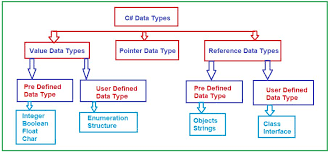Value and reference types are two fundamental concepts of the C# programming language. Value types are data types that are stored directly on the stack, while reference types are stored indirectly on the heap.

Value types are used to store simple values such as integers, floats, Boolean values, and characters. They are also used to store enumerations and structures. Value types are allocated on the stack and are directly accessible to the program. When a value type is declared, a value is assigned to it and the memory for that value is allocated on the stack.
On the other hand, reference types are used to store more complex data such as strings, objects, and arrays. Reference types are allocated on the heap and are indirectly accessible to the program. When a reference type is declared, a reference to its location on the heap is assigned to it. The actual data is stored on the heap and is only indirectly accessible to the program.
Value types are always copied when they are passed as arguments to a method or returned from a method. This means that any changes made to the value type in the method will not be reflected in the calling method. However, reference types are passed by reference, so any changes made to the reference type in the method will be reflected in the calling method.
Value types are generally more efficient than reference types since they are stored directly on the stack, which can be accessed quickly. However, reference types are more flexible, since they can be used to store more complex data.
In general, value types are used for simpler data, such as integers and Booleans, while reference types are used for more complex data, such as objects, strings, and arrays. It is important to understand the differences between value and reference types to write efficient and robust code.